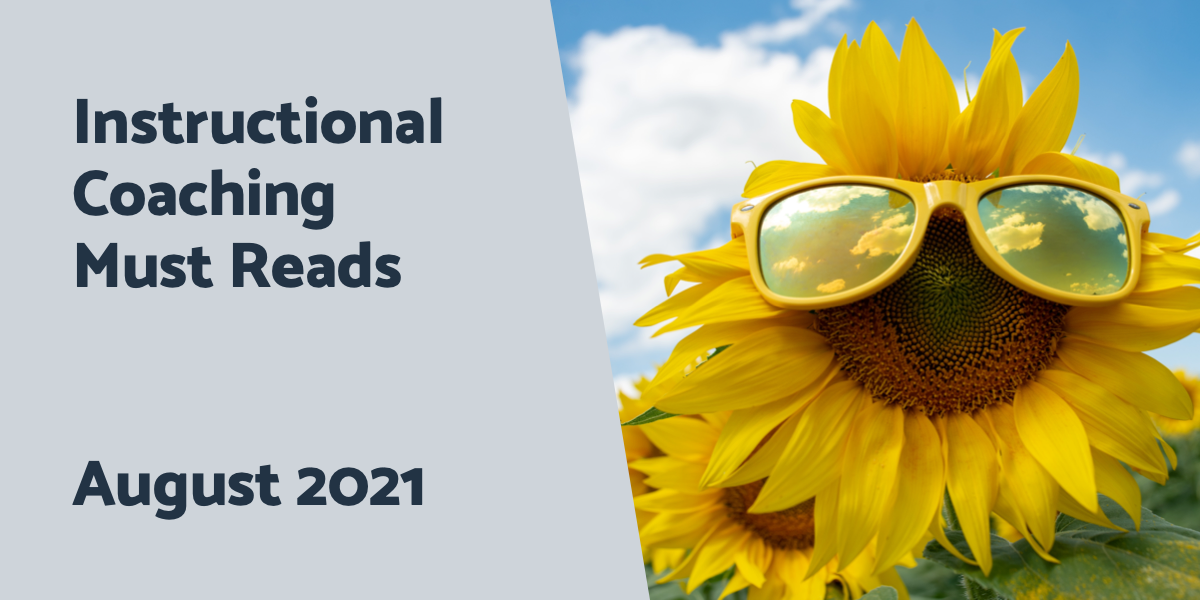


We went through August’s Weekly Coaching Roundups and bundled up the top articles for your back-to-school pack. Learn why coaching brochures are an incredible way to showcase all you do as an IC, how to use affirmation stations to spread love and appreciation to your staff, the importance of relationships and reflection for coaching growth, and more. Enjoy, and we wish you a safe and prosperous 2021-22 school year.
Tired of waiting until the end of the month to read your coaching news? Join our weekly coaching roundup to get these sent directly to your inbox every week!
{{cta(’91e39d53-f5a0-42e6-8226-06f568821405′,’justifycenter’)}}
Use a Coaching Brochure to Showcase All You Do as a Coach
Brochures are a fantastic way to showcase how your partnership with teachers can help them grow. Casey Watts shares some of her must-have sections to include in your own brochure, as well as some tips for distributing them to teachers.
”
We can’t ever assume that teachers, or even administrators, understand what we provide as instructional coaches. So, building clarity around our role will allow others to utilize us well, promoting the culture of collaboration needed to unlock the potential inside our schools. . . .
Part of building clarity around your role means setting boundaries and stating non-examples is a way to establish this.”
Building a Culture of Appreciation
Brandy Alexander believes you should use “affirmation stations” to thoughtfully and creatively spread love and appreciation to all of your staff members this year.
“At first, we planned to label one larger envelope for the lunchroom staff and one larger envelope for the custodial staff, but
we wanted everyone to feel personally included. Therefore, we hand-wrote an envelope for every – single – staff member. . . . You don’t have to wait until Valentine’s Day;
affirmation stations spread kindness across the school any week of the year. In fact, it’s an excellent way to start the year off on the right foot.”
Relationship-Building 101
Diana Benner promotes seven ways you can strengthen your coaching relationships.
“One of main jobs that you have as an instructional coach is to give feedback. However, it is just as important that you receive feedback from the teachers you are working with.
Create a survey or be open during your coaching conversations about receiving feedback. Ask those you coach how the relationship is going and how you can support them better.
This type of two-way feedback is essential to building trust. In addition, you are modeling the openness you are hoping to see in your teacher.”
Planting Your Coaching Seeds
Kristin Houser provides new ICs a 5-step process for creating a presentation that overviews their role and instructional coaching.
“If you’re new to a building or new in your role,
introducing yourself and your instructional coaching program to staff can feel SCARY. Gah! However it’s a really important beginning of the year step, as
it will provide the foundation for a successful ‘culture of coaching’ within the school.”
Apply to Pilot TeachBoost Coach!
TeachBoost Coach helps ICs manage their coaching cycles, goals, meetings, and evidence. Additionally, coaches can upload resources and videos to keep everything in one place. Sign up below to try it out!
{{cta(‘997af1e4-1e4d-4d17-8c80-43a15a5af702’)}}
The 4 Speeds of Teacher Buy-In
Not everyone is a go-getter when it comes to trying something outside their comfort zone, and teachers are no exception. Becca Silver spotlights a few overarching characteristic types of teachers when approaching change and how to handle each as an IC.
“The truth is I don’t love the term ‘buy-in.’
It feels like I’m trying to convince you or have you ‘buy in to’ a decision I already made. I much prefer to use language of ownership and engagement because we’re co-creating something. . . .
Adult learners have a wide range of interests, rich experiences, and learning styles; as leaders, we need to start engaging with the diversity within our school ecosystem.”
A Coach’s Keys to Growth: Reflections and Relationships
Rachel Mane highlights what she believes to be the two most significant factors to her coaching growth and journey: relationships and reflection. ️
”
Reflection has become such an essential part of my work as a coach and helped me grow the most. . . . Reflection is also the center of each conversation I have with teachers, even if it is not explicit that we are taking time to reflect.
Questioning teachers in a way that encourages reflection is important to keep coaching conversations as an open dialogue.”
Creating a Culture of Coaching
Elena Aguilar outlines ten steps you can follow to build an enduring coaching program.
“At the very least, a school needs a simple,
memorable statement that defines coaching. Without this, coaching endeavors will struggle. . . . After determining a vision and definition of coaching and naming the model,
leaders must determine the goals of a coaching program.”
Planning PD with Design Thinking
Stephanie Affinito encourages ICs to seek inspiration from teachers for upcoming PD sessions and even suggests two tools to use when reaching out.
“Planning professional learning sessions for teachers is challenging work. . . . So I turned to design thinking.
Design thinking is a process for creative problem solving with a human-centered core that encourages organizations to focus on the people they’re creating for, which leads to better products, services, and internal processes. As a coach, this meant
I needed to completely flip what I knew about creating professional development with teachers.”
{{cta(’34b13594-505a-497a-8a75-16ae35acf14d’)}}
Have some interesting instructional leadership news?
Share it with TeachBoost and we’ll highlight it here.
Photo by Wan J. Kim from Unsplash.
Stay Connected
News, articles, and tips for meeting your district’s goals—delivered to your inbox.








